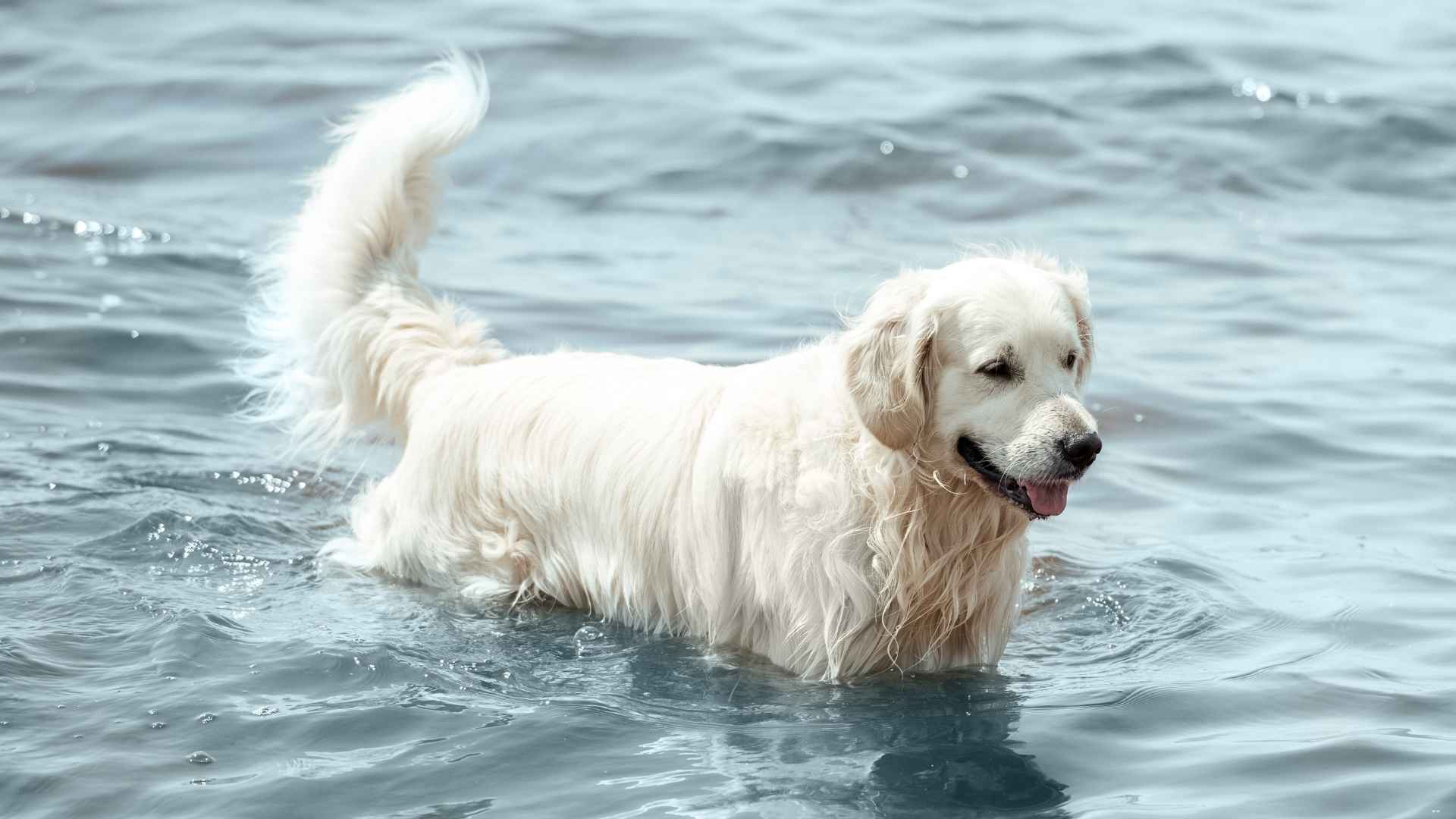“Thousands have lived without love, not one without water.” —W. H. Auden.
Water calls to us, refreshes us, and moves us. And for some dogs, that call is just as strong. You’ll see it in the way they race toward a lake, dive after a stick, or wade in beside you like it’s the most natural thing in the world.
These are dogs who feel alive in the water. While some breeds are content to stay dry, others feel completely at home splashing, paddling, or swimming beside their humans.
It’s not something you can teach easily—it’s part of who they are. Their history, their instincts, and even their body shape all play a role.
Whether you’re planning weekend lake trips or just want a beach buddy, the right breed makes all the difference. By the end of this article, you’ll know exactly which dog breeds love the water as much as you do.
Dog Breeds That Enjoy Swimming
1. Portuguese Water Dog
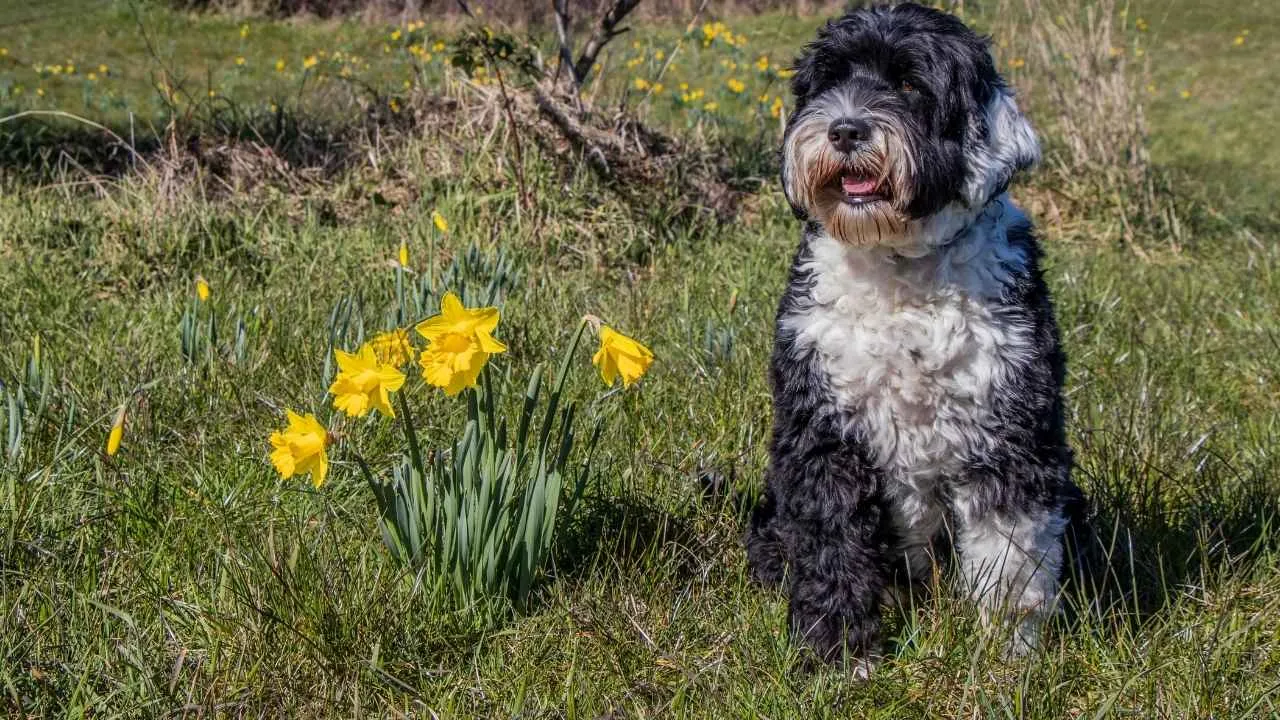
This breed’s slightly rounded body and webbed toes make it exceptionally agile in the water. Their dense, curly coat acts as insulation without weighing them down. Even in colder waters, their stamina rarely dips — something that sets them apart physically.
Built for Sea Tasks
Portuguese Water Dogs were originally bred to herd fish into nets and retrieve lost tackle. Their agility on slippery boat decks and instinct for diving helped fishermen across Portugal’s coastlines. These roles shaped their high comfort level with any aquatic setting.
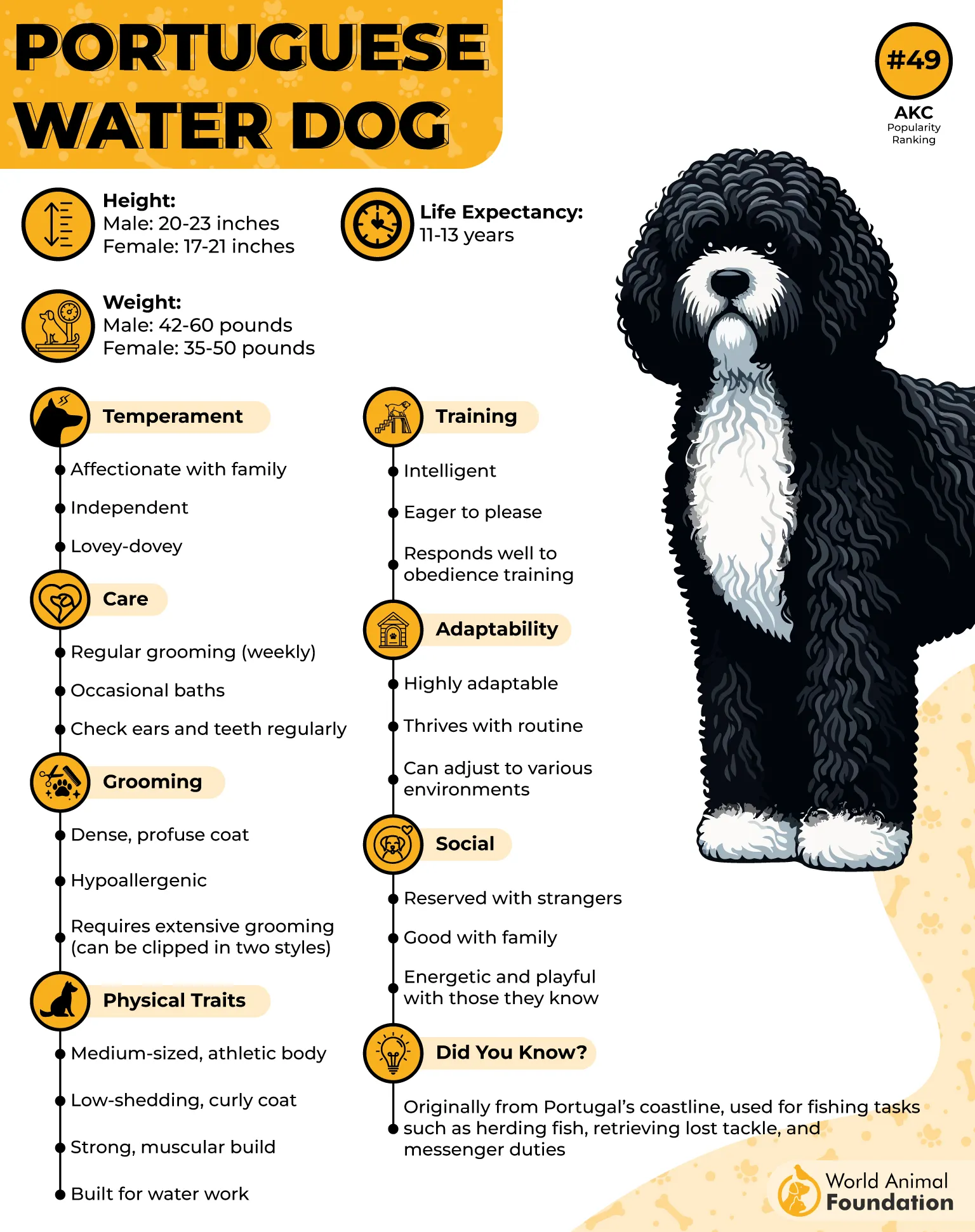
Driven and Focused in the Water
They don’t just enjoy splashing around — they show deliberate focus while swimming. Their deep chest allows for controlled breathing, giving them better endurance. When playing fetch in water, their retrieval style often mirrors working behavior.
Presidential Popularity and Purpose
Bo, the former First Dog of the U.S. in the Obama administration, brought attention to this breed’s energetic nature, as the NY Times highlighted. As one of the lesser-known water dog breeds, it’s also among the few with actual maritime history. That combination of heritage and ability makes them strong swimmers today.
2. Irish Water Spaniel
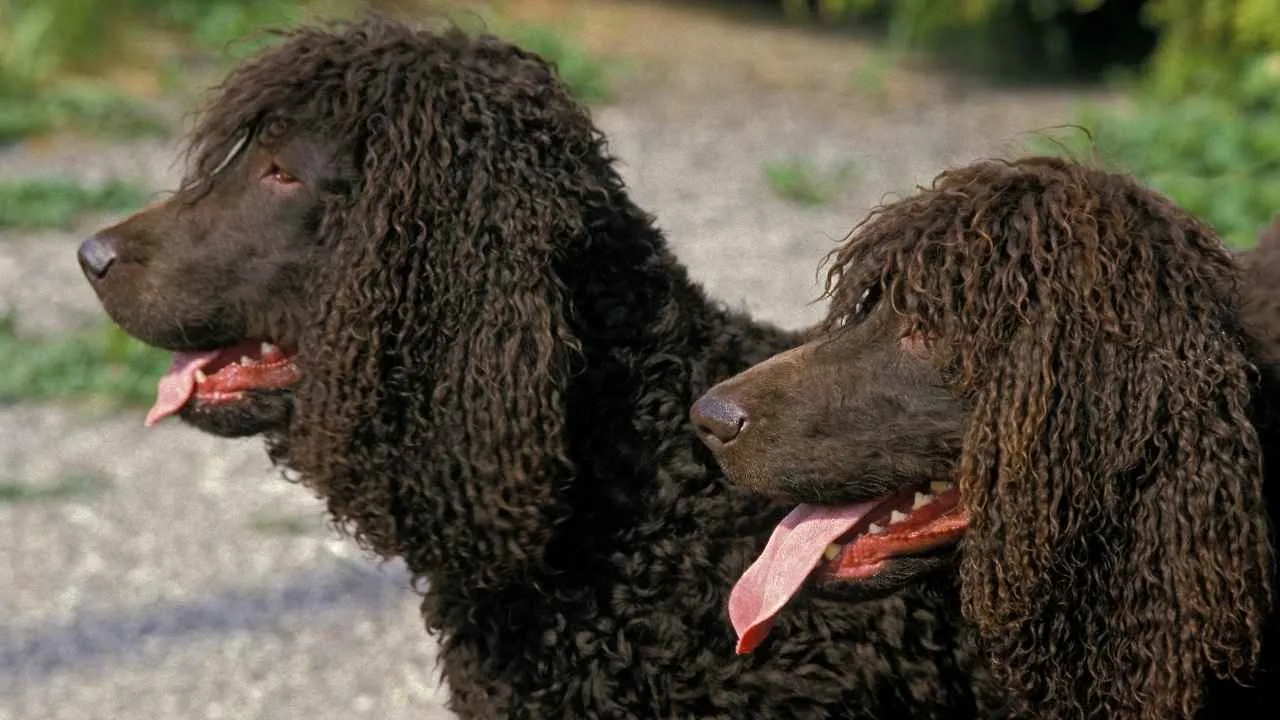
This breed’s moderate size and quiet indoor temperament suit smaller living spaces. While alert and observant, they don’t bark unnecessarily, which helps reduce neighbor complaints. They also enjoy lounging in corners, especially after structured daily walks.
Energy that Follows Routine
Though athletic by nature, Irish Water Spaniels do well with consistent schedules. A brisk walk paired with mental play keeps their temperament balanced indoors. Their patience and trainability help them adjust smoothly to apartment routines.
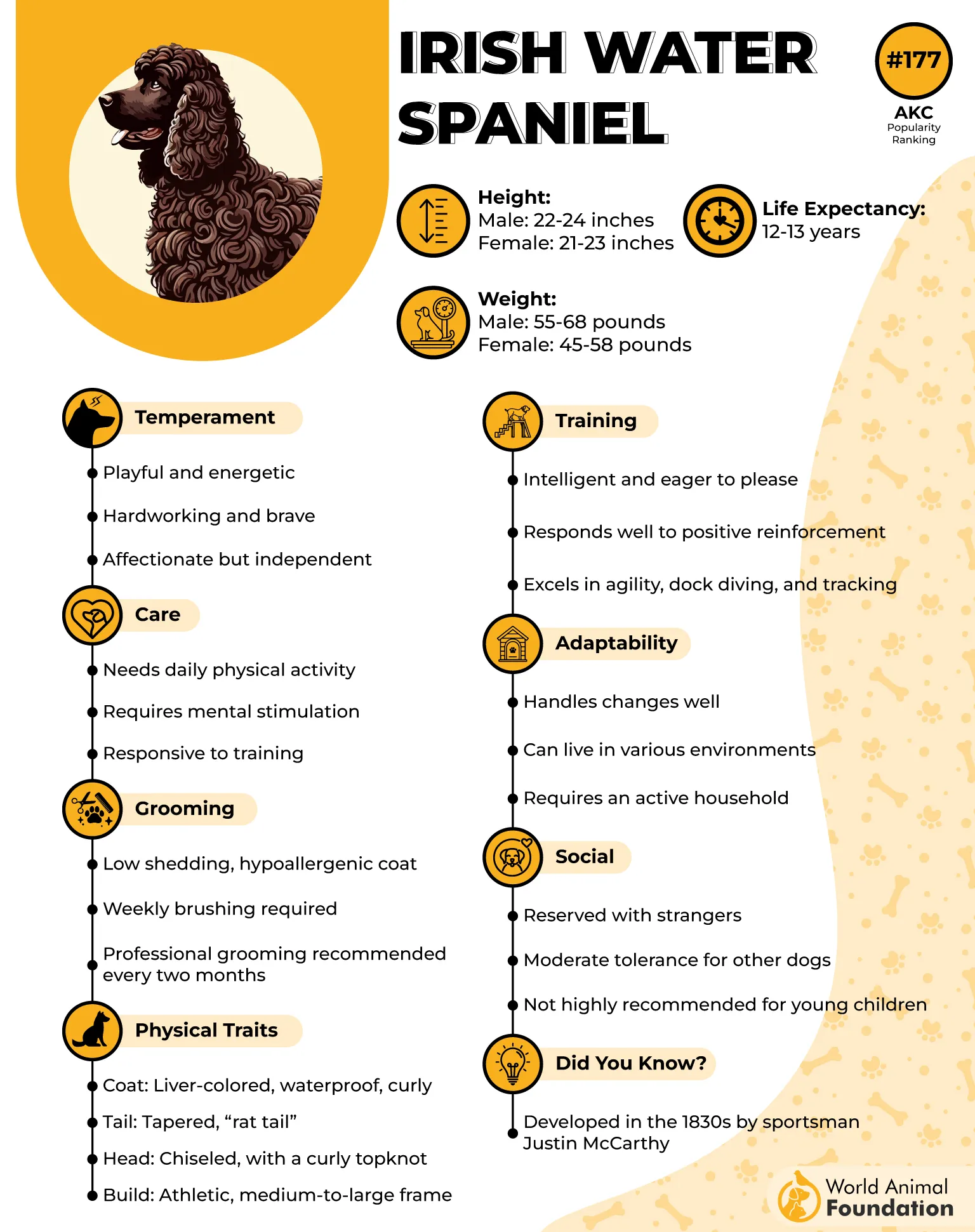
Coat and Cleanliness Perks
Their water repellent coat helps reduce odor retention, especially in humid indoor conditions. The tight curls rarely shed, and they don’t track in debris like some double-coated breeds. Weekly brushing is usually enough to keep them tidy.
Aquatic Design in a City Dog
As one of the few breeds with naturally webbed feet, they’re exceptional swimmers when given water access. Despite that, they’re calm and composed during indoor downtime. According to the AKC, they are recognized as the tallest among spaniels; their lean structure helps in compact living.
3. American Water Spaniel
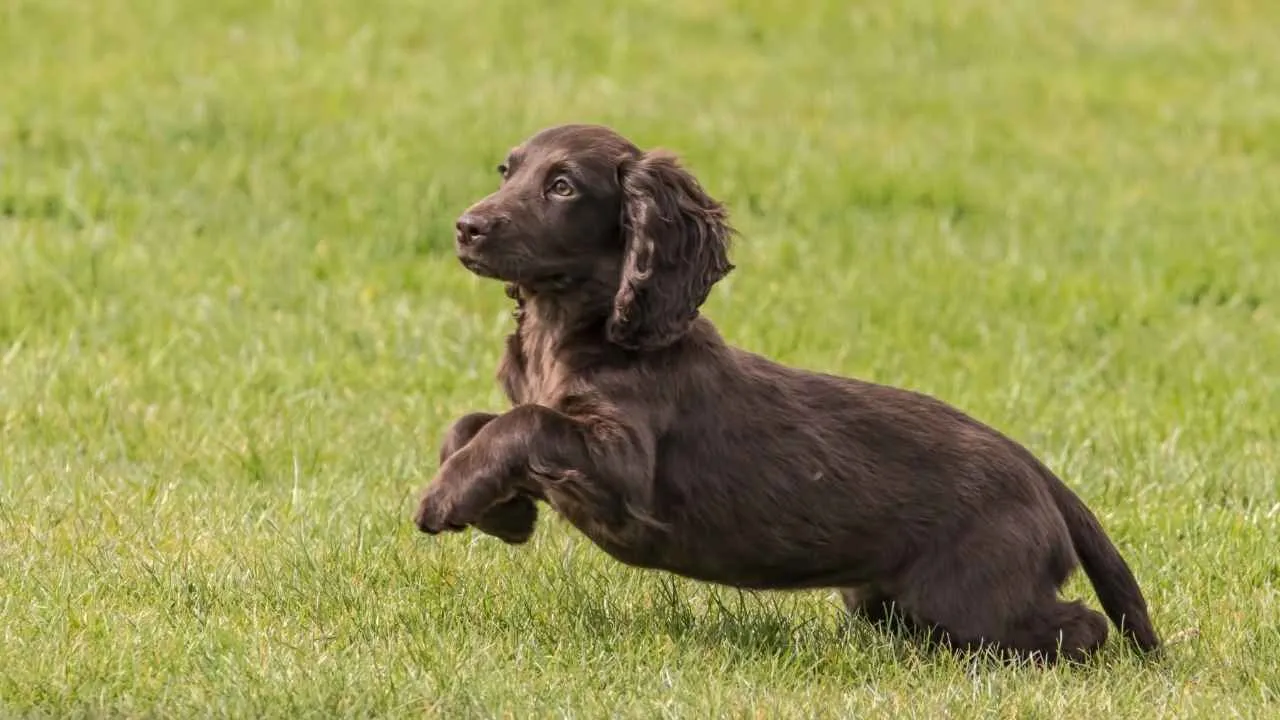
The American Water Spaniel typically weighs between 25 to 40 pounds, making it an easy fit for smaller living spaces. Its medium size allows it to move comfortably in apartments without knocking over furniture. Combined with moderate energy indoors, it rarely feels overwhelming.
Adaptable and Responsive Nature
They form strong bonds with their owners and adapt quickly to quiet routines or active schedules. A few short play sessions and walks are often enough to keep them content inside. Their alertness also makes them good watchdogs, even in a compact setting.
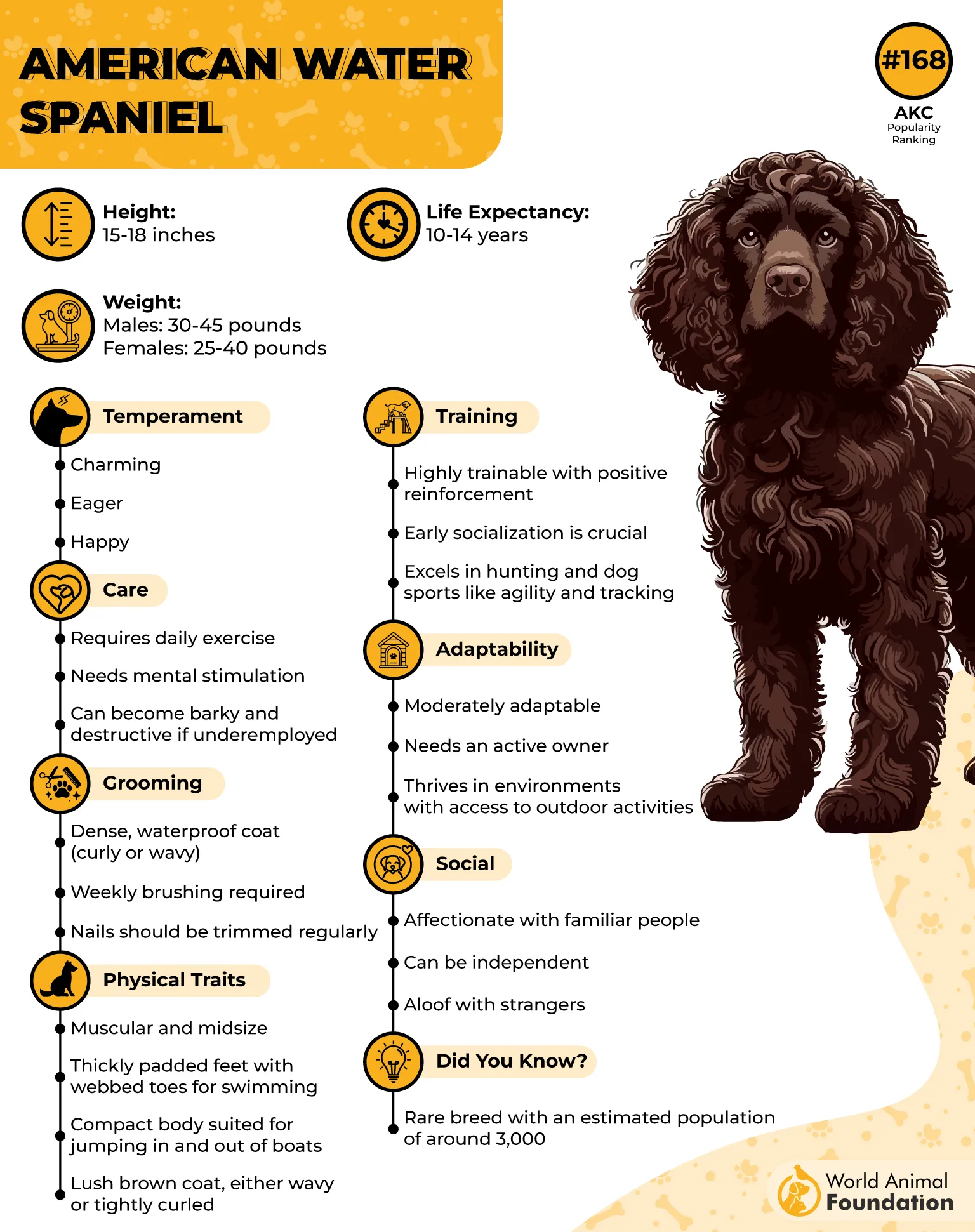
Low Shedding and Manageable Coat
The double coat sheds less than many sporting breeds, which makes cleanup easier for pet parents living in smaller homes, as PetMD claims. Brushing a few times a week maintains coat health and reduces dander. Their curly fur also doesn’t carry much odor when dried properly.
Natural Swimmers with a Unique Build
American Water Spaniels have webbed paws, making them strong, confident swimmers in lakes or ponds. Interestingly, it’s the only breed developed in Wisconsin specifically for water retrieving, a fact that shaped both its compact build and eagerness for aquatic play.
4. Spanish Water Dog
Their medium size and squared build allow them to move comfortably in tight indoor spaces. Even in apartments, they stay calm as long as their routine includes physical and mental stimulation. Their low-shedding, woolly coat also appeals to allergy-sensitive households.
Routine-Oriented and Trainable
Spanish Water Dogs respond well to structure and tend to mirror their handler’s energy indoors. They adapt quickly to city life if training begins early and boundaries stay consistent. That adaptability makes them less reactive to urban noise or unfamiliar settings.
Strong Bonding Without Velcro Tendencies
They form deep connections with their owners while still tolerating occasional alone time. Though cautious with strangers at first, they usually coexist peacefully with other dogs when socialized early. Their steady energy prevents hyperactivity indoors, which suits apartment rhythms.
Natural Swimmer With Herding Roots
Originally used for herding and retrieving from lakes and marshes, they developed strong coordination in water. That explains their easy comfort with dog swimming environments and beach play. Their balanced drive makes them a reliable water-loving dog for active owners.
5. Golden Retriever
Golden Retrievers are calm, even in indoor environments, as long as they get regular interaction. Their adaptable nature helps them settle into apartment routines without showing signs of restlessness. Many dogs with high energy struggle indoors, but Goldens manage surprisingly well.
Quiet and Predictable Indoors
They are not constant barkers or high-jumpers, which limits disturbances in shared housing setups. A consistent schedule and access to a short daily walk usually meet their activity needs. Their predictability indoors makes them well-suited for apartment dwellers.
Easily Trained for Indoor Manners
Golden Retrievers respond well to crate training, leash manners, and basic boundaries, making indoor living more manageable. Their food motivation and eagerness to please make training efficient, especially in confined environments. Cleanup is also easier with short grooming routines.
An Unexpected Historical Skill
One of the best dogs for scent work, Golden Retrievers were originally used in Scotland to retrieve game across land and water. Their balanced personality — neither too dominant nor too timid — comes from generations of stable breeding.
6. Chesapeake Bay Retriever
Though solidly built, the Chesapeake Bay Retriever isn’t overly restless inside a home. They tend to be calm when not working, provided they’ve had their daily exercise. Their moderate energy level translates into stillness indoors, which works well in apartment settings.
Adaptable with Consistent Structure
This breed thrives on routines and clear boundaries, making it easier to manage them in smaller spaces. Early training curbs any destructive behavior from under-stimulation. With consistent mental engagement, they adapt surprisingly well to urban living.
Naturally Reserved and Low-Drama
Chesapeakes are known for being more reserved than other retrievers, especially with strangers. They don’t bark unnecessarily, making them apartment-appropriate in terms of noise. They’re generally content relaxing after physical and mental work is done.
Rooted in Utility and Endurance
They were originally recognized as powerful working dogs on icy Chesapeake waters, prized for their unmatched swimming ability. Their thick, oily double coat resists cold and dries quickly after a swim. Even in tight indoor spaces, they carry that calm confidence bred from real work.
7. Standard Poodle
Standard Poodles are naturally calm inside the home when their energy is properly directed. Their intelligence allows them to quickly adapt to apartment rules and routines. With early training, they rarely become vocal or overly reactive in enclosed spaces.
Highly Responsive to Mental Stimulation
This breed responds exceptionally well to brain games, scent-based play, and structured activities indoors. Even a short daily session of mental work can replace excess physical activity. That makes them manageable for apartment dwellers with moderate schedules.
Clean and Low-Odor Coat
Despite the curly coat, Standard Poodles shed minimally and have very low dander levels. Their coat’s texture traps hair, preventing it from spreading in small living areas. Regular grooming keeps them tidy, with no lingering doggy smell.
Famous for Their Trainability
As one of the top five most intelligent dog breeds, the Standard Poodle is often praised for its advanced learning ability. Their obedience in urban settings stems from centuries of use in circuses and service work. That history supports their role in apartment environments today.
8. Flat-Coated Retriever
Flat-Coated Retrievers are known for their cheerful demeanor and easygoing adaptability. With consistent daily walks and mental stimulation, they adjust well to smaller spaces. Their calm indoor energy makes them manageable even in apartment settings.
Body Type That Fits Narrow Spaces
Despite being medium-to-large in size, they carry a lean, athletic frame that isn’t bulky indoors. Their moderate height allows easy movement around furniture without knocking things over. They also have a graceful gait, rarely charging around recklessly inside.
Coat and Grooming Suitability
Their flat, glossy coat doesn’t trap debris as much as denser breeds, keeping shedding relatively manageable. Weekly brushing helps avoid buildup, reducing the need for intensive grooming. This makes coat care easier in compact, indoor spaces.
Long Puppyhood Phase
This breed is famously known for maintaining a puppy-like personality for years, sometimes well into adulthood, as claimed by FCRSA. That eternal optimism helps them thrive emotionally even without large outdoor spaces, provided they’re mentally engaged indoors.
9. English Setter
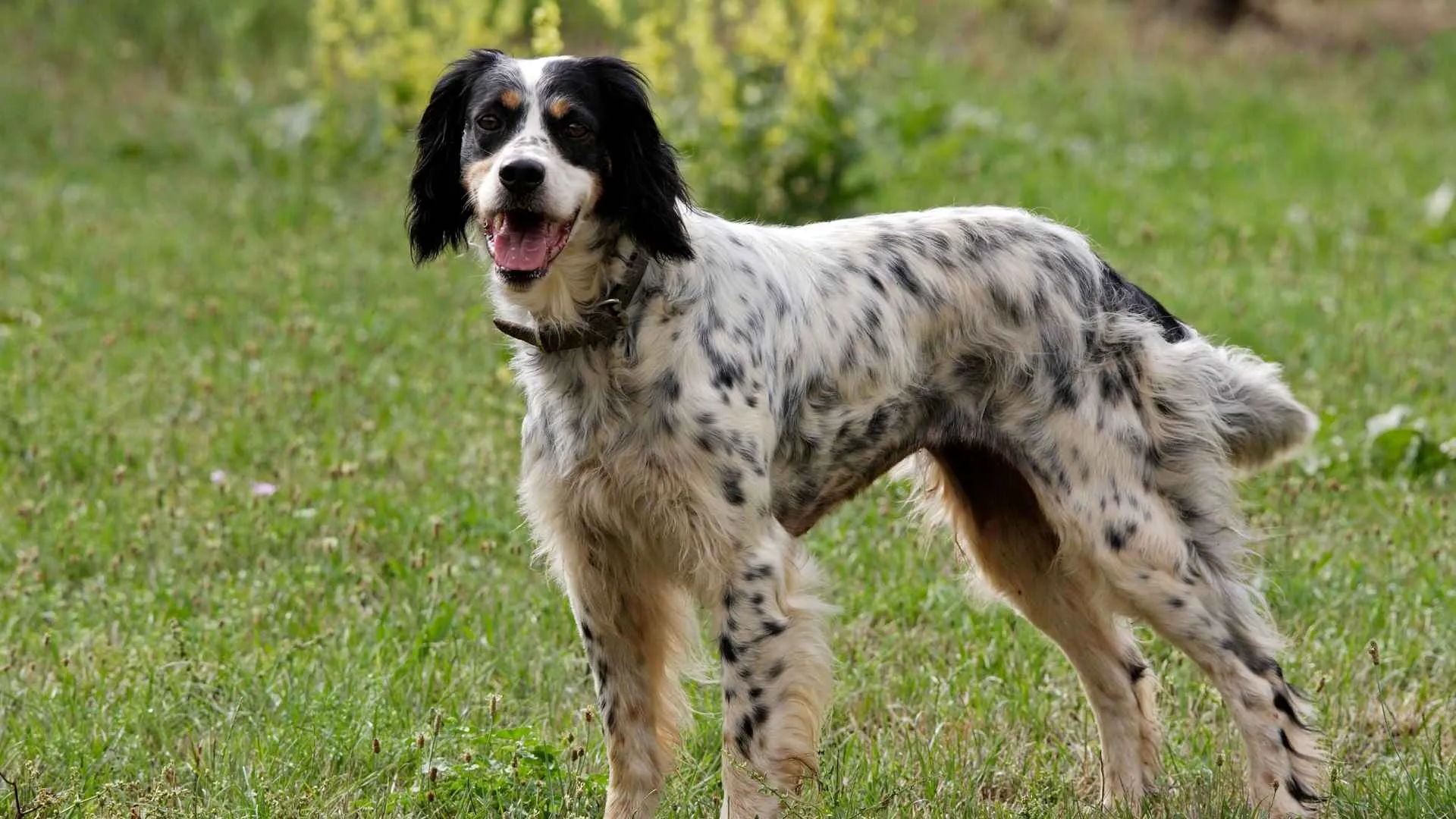
English Setters are notably calm when indoors, often lounging quietly after moderate play. Their gentle personality allows them to coexist well in shared apartment buildings. They rarely bark excessively, especially when their routine stays consistent.
Moderate Energy with Predictable Peaks
This breed tends to have active windows rather than random bursts of energy. Regular walks or a short off-leash run can meet their physical needs. Once exercised, they transition into long, restful periods — ideal for compact living spaces.
Graceful Movement and Spatial Awareness
Unlike some large breeds, English Setters are surprisingly light-footed inside small areas. They move with awareness, avoiding clumsy collisions with furniture or people. This makes them manageable for apartment layouts without wide-open floors.
Coat That Manages Well Indoors
Though they have feathered fur, it doesn’t shed uncontrollably when maintained. Weekly brushing usually keeps it from matting or scattering in confined spaces. One interesting note — they’re one of the few sporting breeds with speckled patterns from birth, known as “belton” markings, as per the AKC.
Conclusion
Not all dogs enjoy the water, but some seem born for it. These swimming dog breeds carry generations of instinct, build, and behavior that make them natural companions near lakes, rivers, and oceans.
From retriever breeds with a love for fetching in waves, to bird dogs that calmly wade through wetlands, these pups know their way around water. Many, like the Portuguese Water Dog, even have a water-resistant coat or a thick double coat for insulation.
The American Kennel Club recognizes most of these dogs not just for their swimming ability, but also for their purpose in water rescues and fieldwork. Whether you’re drawn to an ancient breed or a modern favorite, each one brings its own rhythm to every splash.


